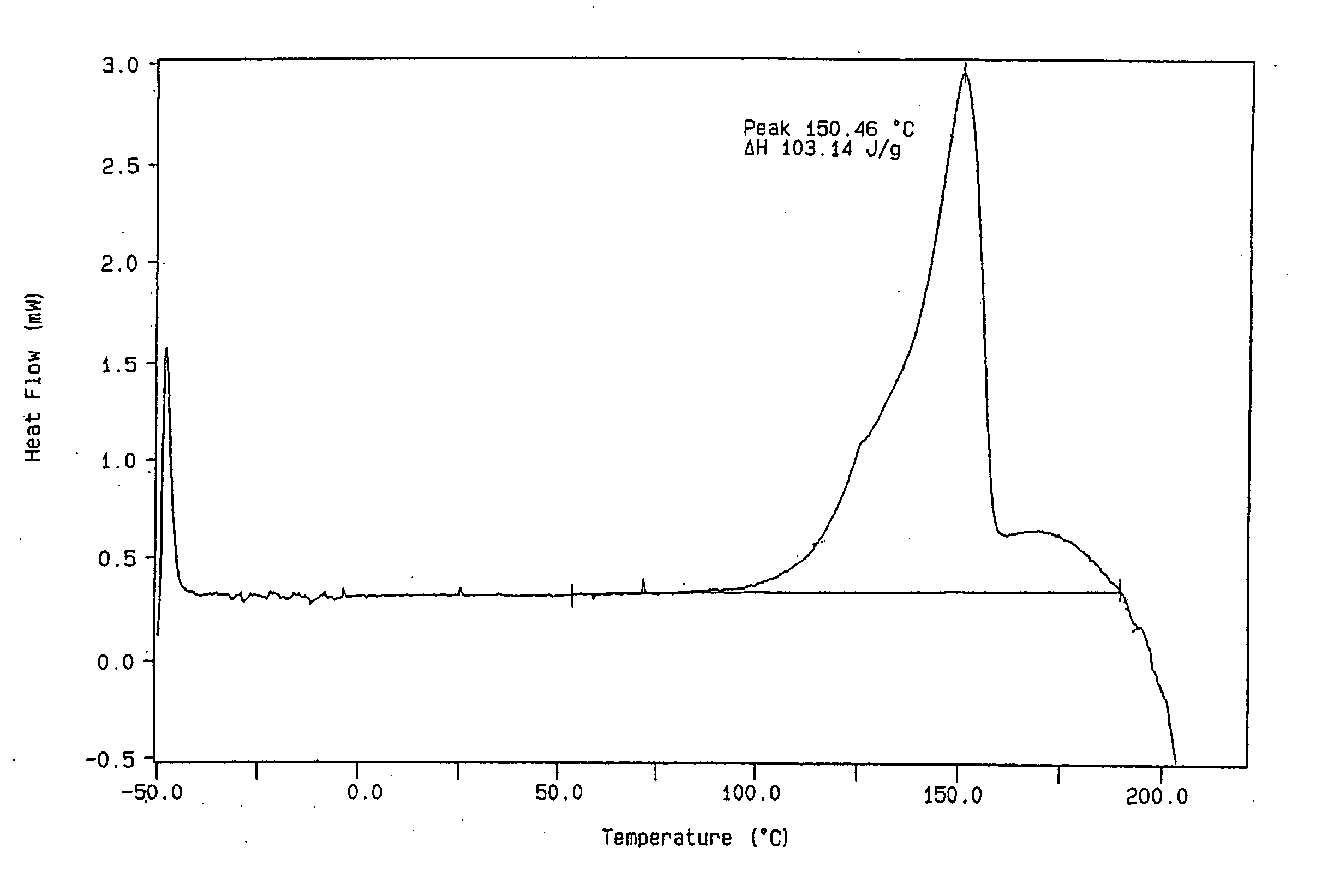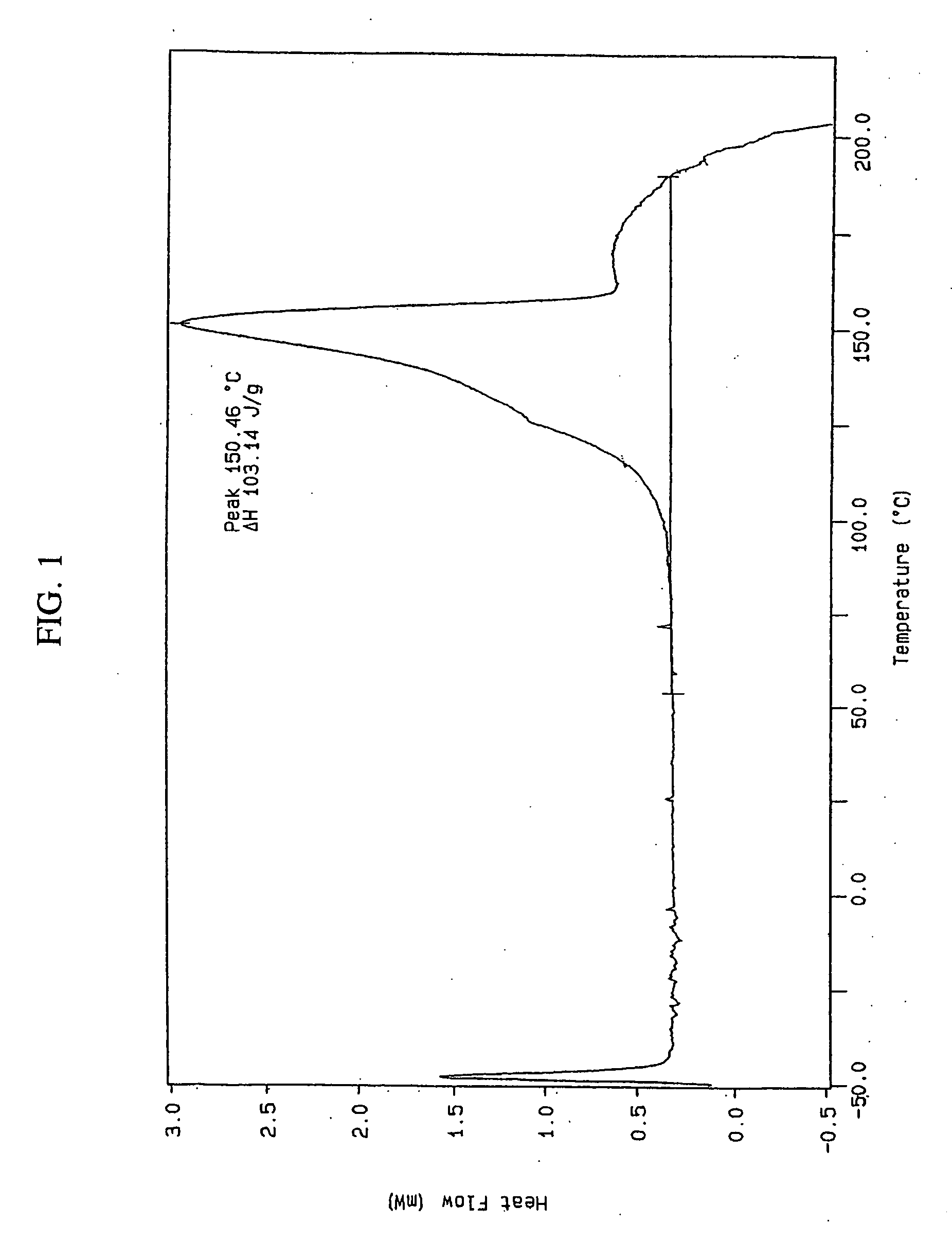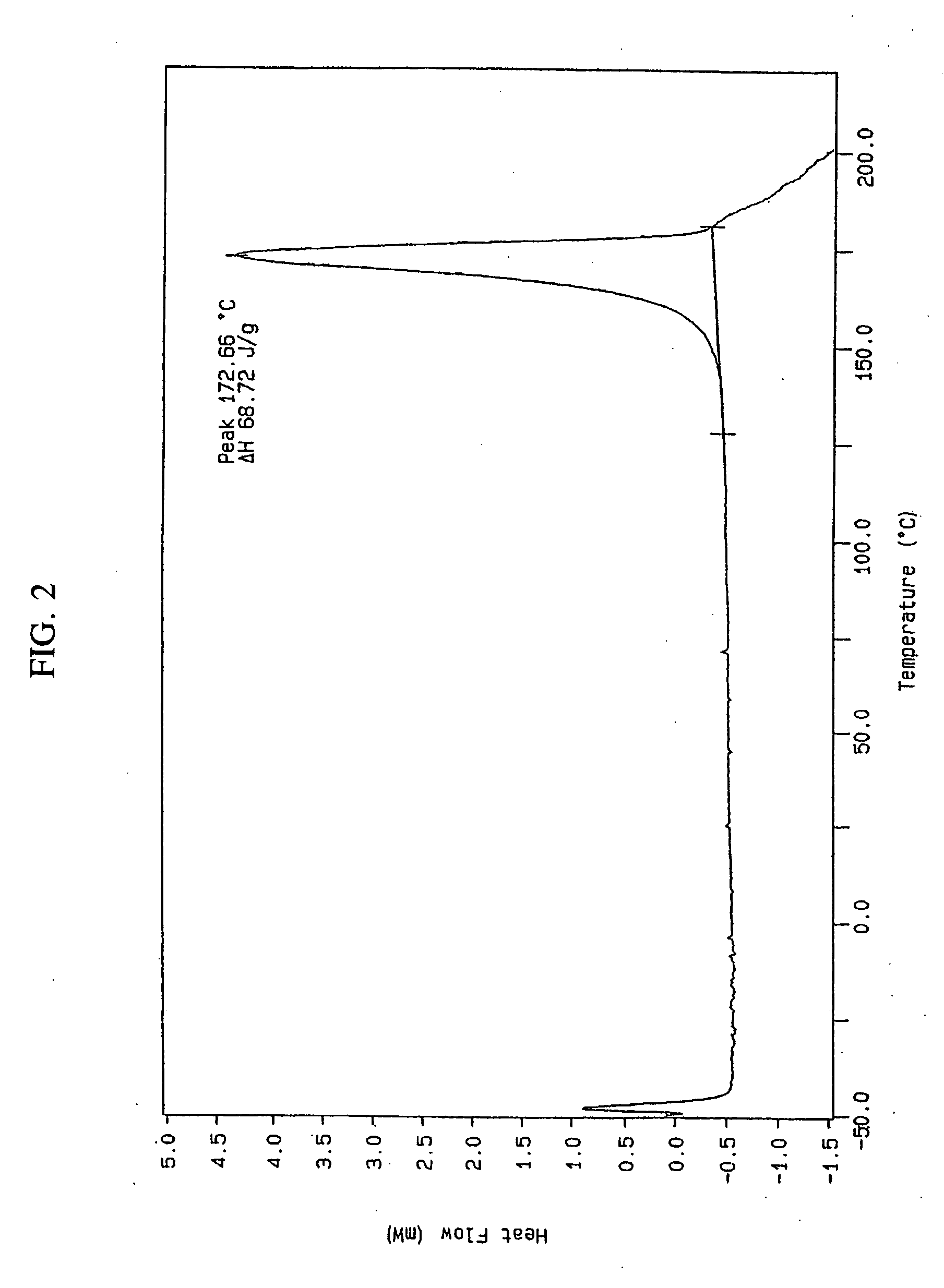Lercanidipine salts
a technology of lercanidipine and acid salts, which is applied in the field of new acid salts of lercanidipine, can solve the problems of low yield of desired product, and the isolation of lercanidipine hydrochloride in crystalline form is again quite complex
- Summary
- Abstract
- Description
- Claims
- Application Information
AI Technical Summary
Benefits of technology
Problems solved by technology
Method used
Image
Examples
example 1
Preparation of Amorphous Lercanidipine Besylate
[0077] A stock solution of lercanidipine free base was prepared by dissolving 181.7 mg of lercanidipine free base in 0.2 ml tetrahydrofuran (THF). The free base may be obtained by dissolving the crystalline lercanidipine hydrochloride (commercially available from Recordati S.p.A., Milan, Italy) in methanol, adding a slight excess of 2 N NaOH followed by water and filtering the obtained precipitate, which is then dried at room temperature under vacuum. An acid stock solution was prepared by dissolving 65.3 mg benzenesulfonic acid in 0.1 ml THF. An equimolar mixture of the lercanidipine stock solution (0.2 ml) and the acid stock solution (0.072 ml) was prepared. All of the solvent was removed under vacuum. Upon removal of the solvent a glassy film, characteristic of amorphous material, was observed. The amorphous material was dissolved in methanol (MeOH) and seeded with crystalline solid, resulting in a pale yellow crystalline material. ...
example 2
Preparation of Crystalline Lercanidipine Besylate
[0079] A stock solution of lercanidipine free base was prepared by dissolving 212.3 mg of lercanidipine free base in 1 ml tetrahydrofuran (THF). An acid stock solution was prepared by dissolving 21.7 mg benzenesulfonic acid in 0.1 ml THF. A mixture of the lercanidipine stock solution (0.236 ml) and the acid stock solution (0.06 ml) was prepared and stored closed at 25° C. for 24 hours. The mixture was then stored at −18° C. for 24 hours and at 25° C. for an additional 24 hours. No precipitate was observed at this point.
[0080] The solvent was allowed to evaporate under ambient conditions. After 4 days a glassy film was observed. The glassy film was dissolved in 0.15 ml ethyl acetate (EtAc). After 8 days no precipitate was observed. Again the solvent was evaporated and a glassy film developed. The glassy film was dissolved in 0.05 ml tert-butyl methyl ether (TBME) and the sample was allowed to stand closed at room temperature for 6 da...
example 3
Preparation of Crystalline (and Amorphous) Lercanidipine Napadisylate
[0086] A stock solution of lercanidipine free base was prepared by dissolving 169.6 mg of lercanidipine free base in 0.82 ml methanol (MeOH). A solution was prepared by mixing 0.2 ml of the lercanidipine free base stock solution and 0.195 ml of aqueous naphthalene-1,5-disulfonic acid (50 mg / ml). Upon mixing, a precipitate was observed. The precipitate was dissolved by the addition of 1.0 ml MeOH. The sample was stored at −18° C. for 4 days, with daily warming to room temperature for observation. The sample was then stored open at room temperature for seven days in order to allow the solvent to evaporate. Crystals were observed upon evaporation of the solvent. The crystals were suspended in 0.25 ml H2O and 0.01 ml MeOH. Following suspension, the crystals were collected by filter centrifugation (10,000 RPM, 0.22 μm filter) and dried under vacuum.
[0087] The crystalline material was used as seeding material in a seco...
PUM
 Login to View More
Login to View More Abstract
Description
Claims
Application Information
 Login to View More
Login to View More - R&D
- Intellectual Property
- Life Sciences
- Materials
- Tech Scout
- Unparalleled Data Quality
- Higher Quality Content
- 60% Fewer Hallucinations
Browse by: Latest US Patents, China's latest patents, Technical Efficacy Thesaurus, Application Domain, Technology Topic, Popular Technical Reports.
© 2025 PatSnap. All rights reserved.Legal|Privacy policy|Modern Slavery Act Transparency Statement|Sitemap|About US| Contact US: help@patsnap.com



